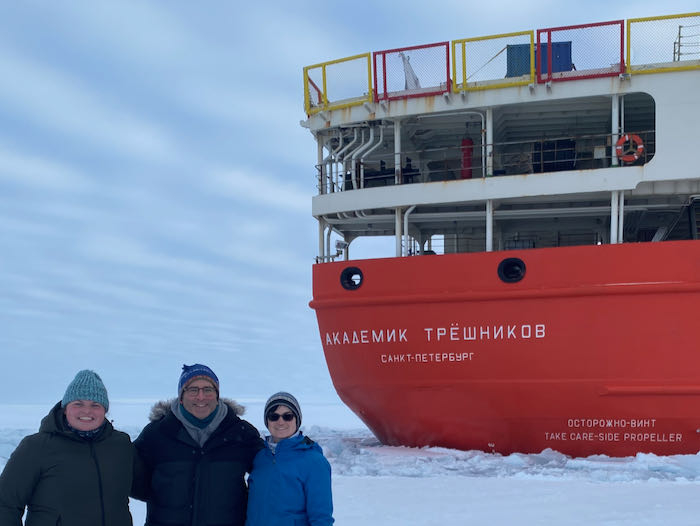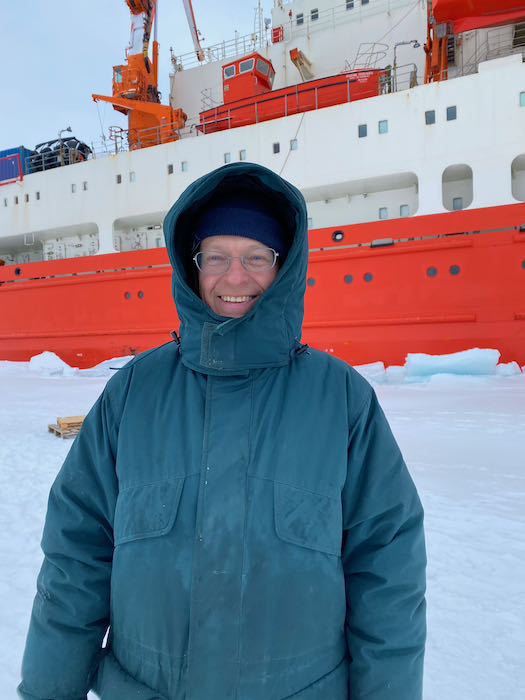On, Friday and Saturday October 1st and 2nd, we pulled into and parked on our ice stations to sample ice and set up monitoring equipment. But what does it mean to set up an ice station? How does a ship just pull over in the ice and park?
The captain has to use satellite images and observations from the bridge to find a suitable ice pack that is large, has no open areas (leads), and is flat. Then, if the ice is thick enough (I think at least 1 meter), the captain carefully guides the ship into the floe and "parks" it.

Once the ship is secure, the team needs to get on the ice. We heard they were going to just lower the gangplank so we could walk down the steps, but, instead, they used the crane to lower us onto the ice in a giant 8-person basket.


The trip up and over the side of the ship was smooth but a little nerve-wracking, as we could see the water between the side of the ship and the ice. Stepping off, I was worried that the ice wouldn't hold us. The ice also made crackling sounds (like there was water underneath it), but that was just the ice crystals blowing across the surface. In some places there was a layer of snow, and when I stepped through it, water came up - another small source of anxiety.
We were told that there were bear guards on the bridge and that they would radio if a polar bear was spotted (the Tryoshnikov does not have armed bear guards on the ice like some other ships). As there were almost 30 of us on the ice for a brief group photo, many of us were doing the mental math of how many 8 person basket lifts could be done before a polar bear would get us?!? As I tell my students when we discuss evolution, it's not "survival of the fittest. It's survival of the fit (best suited for the environment). You don't have to be the fastest. You just need to be faster than somebody else."
Being on the ice in the middle of the Arctic was a truly amazing experience and worth the worry. We all posed for photos and took selfies


We also took the "2021 NABOS Family Photo." Look for it on holiday cards across the world this season.



Comments